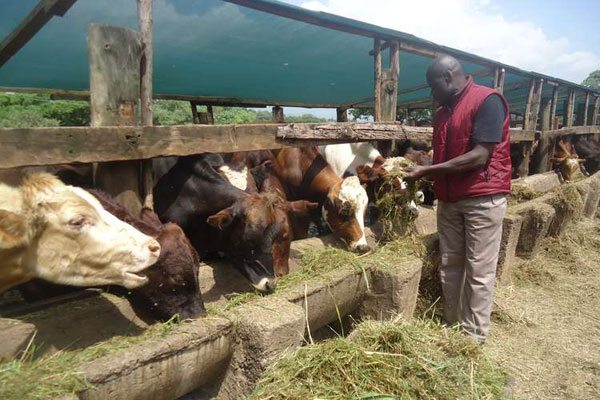The rainy season is here in most parts of the country, hence grass and fodder are growing at a fast pace. However, there are some two problems associated with this scenario unless a farmer has taken strategic planning in managing the feeding of this fast growing grass/fodder.
First, as soon as it rains the grass and fodder growing has a high moisture content and therefore low dry matter. This can be said to be immature grass or fodder. This low dry matter means that for every bite the animal takes the amount of proteins and carbohydrates it gets is lower than if it had taken the same quantity of dry grass or fodder.
Less milk
The impact is that if the cow consumes this feed, the farmer will notice a drop in milk production or no increase will occur. This because although the cow has ingested a lot of grass or fodder, most of it is mostly just water and the proteins and carbohydrates contained in it are not enough to make milk.
In addition to the above problem, the cow will pass loose dung frequently and farmers with zero grazing will have to contend with frequent cleanings or with unsightly and dirty cows and structures.
The other problem is that grazing such grass or giving such fodder means that the farmer has interrupted the growth of the grass or fodder. If the grass does not reach flowering stage then there is less growth.
In short, it is not recommended to feed immature grass or fodder to animals. Instead, wait until the recommended stage (the flowering stage for grasses and legumes and when the napier grass is at about three feet).
This waiting period can only be achieved if the farmer had enough of the recommended grass in other paddocks or had preserved grass in form of hay. If the farmer uses napier grass, then this waiting will be possible if the farmer had planned to have different portions maturing at different times to ensure a continuous supply of the same.
Bouts of diarhoea
The second scenario that will unfold as the rains continue for farmers who did not plan anything is that the grass or fodder will become too much for the animals causing overgrowth.
This overgrowth means the amount of carbohydrates and proteins contained in the grass/fodder is again lower than what the animal requires. This is because as these grass grows beyond the recommended stage, although the amount of water they contain is low, the amount of indigestible component increases and will be passed out undigested.
A lot of farmers do get caught up in feeding napier grass that resembles sugar cane. Farmers without chaff cutters end up throwing away most of the material as cows will reject it. This is despite the time, sweat and expense involved in delivering the napier from the shamba to the zerograzing.
What to do then? If possible, look for funding to buy hay to feed your cows until the grass/fodder reaches maturity.
Cut down any overgrown fodder to let it start growing again and several weeks later you will be able to get enough of the recommended fodder. See your nearest livestock expert for more advise.
The long-term solution to ensuring consistent milk production is a constant supply of enough quality grass /fodder by using feed preservation technologies that allow you to store it for long without spoilage.








